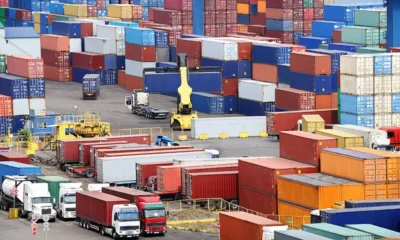Comments and Issues
Understanding the secessionist surge


 Aviation6 days ago
Aviation6 days agoForeign airlines using lower price to force Air Peace from Nigerian-London route–Onyema

 Business4 days ago
Business4 days agoDollar crashes further against Naira at parallel market

 Business4 days ago
Business4 days agoRecapitalisation: Zenith Bank to raise funds in international capital market

 Education4 days ago
Education4 days agoArmy reveals date for COAS 2024 first quarter conference

 Crime4 days ago
Crime4 days agoFleeing driver injures two on Lagos-Badagry expressway

 Business1 week ago
Business1 week agoCrude oil sells above $90 per barrel as ceasefire deal between Hamas, Israel fades

 Business6 days ago
Business6 days agoLagos Calabar Coastal Road project will offer significant economic benefits–Umahi

 Business4 days ago
Business4 days agoZenith Bank surpasses N2trn earnings milestone














A rather capacious interpretation of the right to statehood, along with various political and economic forces, is now destabilizing many regions of the world. In just the past few weeks, the regional governments of Catalonia in Spain and Kurdistan in Iraq have held unofficial independence referendums. And in Cameroon, separatist groups in the English-speaking region of Ambazonia have unilaterally declared independence from the country’s French-speaking regions.
ALSO SEE: Biafra: IPOB members embarrass Buhari at UN General Assembly in US
Meanwhile, Scotland has been weighing whether to hold another independence referendum, so that it can remain in the European Union after the United Kingdom’s withdrawal from the bloc. And dozens of other regions with powerful secessionist forces – including Flanders in Belgium, Biafra in Nigeria, and Québec in Canada – are watching events closely from the sidelines.
National self-determination was a driving force of twentieth-century geopolitics, underpinning the creation of many new countries after the two world wars, and again after the collapse of the Soviet Union. When the United Nations was founded in 1945, it had just 51 member states; today, it has 193. But the road to independence is usually bloody, violent, and long, as Africa’s experience with civil war and ethnic conflict shows. The peaceful breakup of Czechoslovakia in 1993, and of Norway and Sweden in 1905, were the exceptions to the rule.